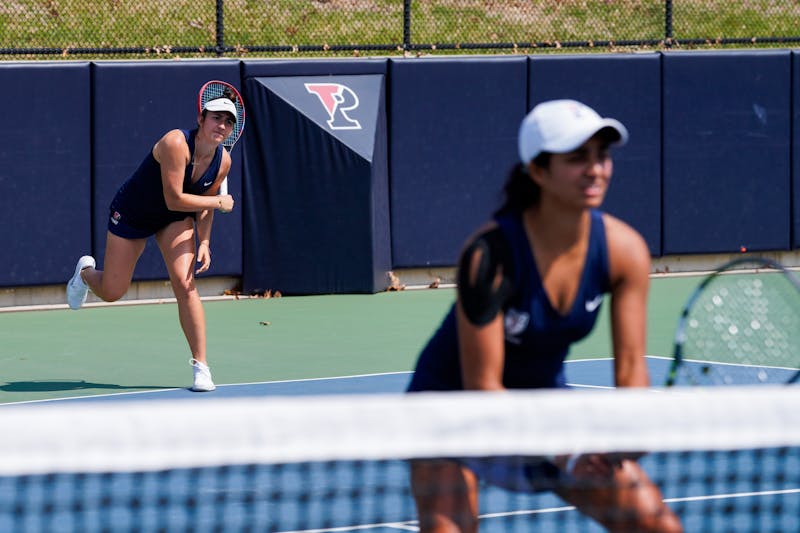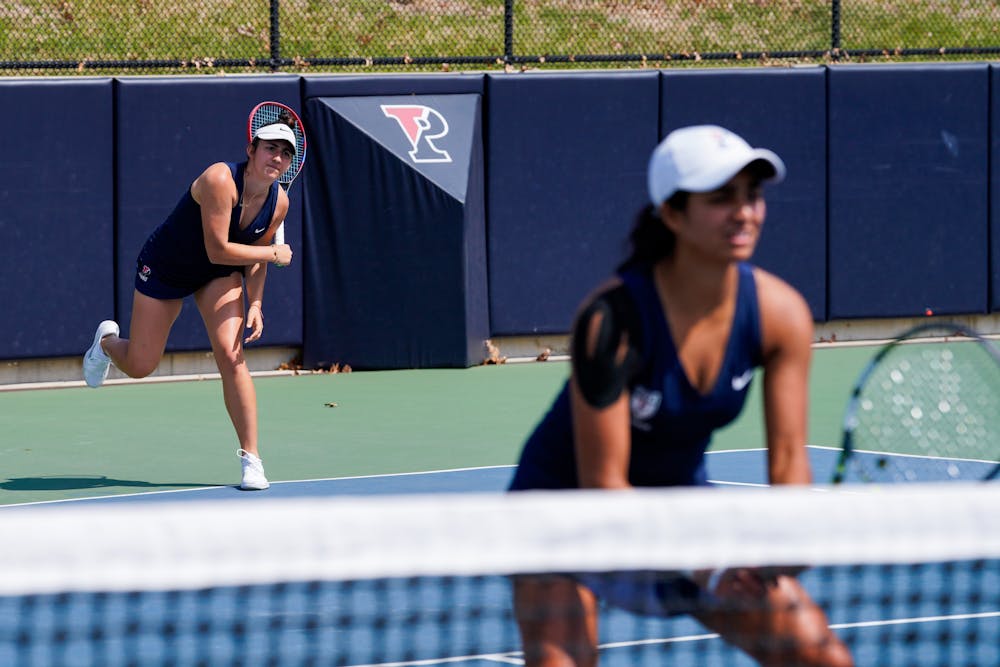As the second-place team in the Ivy League last season, Penn women’s tennis is reaching new heights.
15 minutes ago
Sports columnist Sonal Sukhatme argues that you should watch Penn women’s tennis team.
Credit: Grace Chen
In the public conversation, tennis is less popular than sports like football, basketball, and baseball. And at Penn, school spirit towards athletics is sadly already low. But Penn women’s tennis has a special appeal — and is arguably underrated on campus. The strong performance of the players, the engaging multi-match style, and the unique environment of Penn Park make it easy to be a fan of women’s tennis.
First and foremost, the level of play is exceptional. Last season, the team placed second in the Ivy League, with a 5-2 record. Overall, they were 12-9 throughout the season. No. 1 doubles partners Eileen Wang and Sabine Rutlauka, who have both graduated, racked up an impressive 13-5 record last season. In singles during the Ivy League season, graduated senior Gavriella Smith went 5-1, rising junior Esha Velaga went 4-1, and rising senior Maya Urata went 5-2.
The team is objectively very good — especially at home, winning 11 of the 13 matches played at the Hamlin and Hecht Tennis Centers. This isn’t some random pickup game at a neighborhood park — these are Division I athletes who have a lot of skill and talent to show off.
Secondly, the most common complaint I hear about tennis is that it’s “slow.” Between the thrilling points that go into long rallies and absurdly impressive shots, there are points that end quickly and without drama — and there’s the waiting time between points and between games. That is part of the sport: the ebb and flow of each point, game, and set.
But if that feels “slow” to some, the feeling might be offset by the fact that up to six matches can be going on at once. In college tennis, three doubles matches are played simultaneously, followed by the six singles matches. That means that if one court is between games, it’s likely another court is at an important point. There’s never a dull moment with so much going on at once, and being able to follow multiple matches at once is a great way to stay entertained. Further, it allows people to filter in and out while still maintaining a vested interest in how a match is progressing.
Lastly, the environment of Penn Park is just so special. It’s not an intimidating sports stadium that appears underwhelming when it’s not packed. It truly feels like a park, with tennis courts side by side with baseball fields and recreational grass areas. There are athletes, students, families, and many other people of different walks of life milling around. There are people walking, running, or biking around who stop by to watch a few points of a match. There are kids with their friends playing and cheering for whoever they notice as they zoom by. There are friends and family of the players themselves, focused on the match while eating snacks and waving posters around.
Particularly in spring during Ivy League play, the weather is usually sunny and bright, perfect for hanging out for a few hours. Tennis matches can be long, because they include both doubles and singles, but again, the beauty of the multiple matches shines through the fact that you can stay for one player’s match instead of the whole day. You can also tune in and out as you walk around Penn Park, or even bring some homework with you and spend the day in the sun with your laptop and some good Division I sports.
Overall, athletics at Penn deserve our attention, and women’s tennis is an excellent way to be involved without too much commitment. The matches are free to watch, so please, come by Penn Park with a book, some work, or just to hang out. Stay for 30 minutes, or three hours — whatever feels right for you. It’s a perfect way to spend an afternoon, I promise.
The Daily Pennsylvanian is an independent, student-run newspaper. Please consider making a donation to support the coverage that shapes the University. Your generosity ensures a future of strong journalism at Penn.


